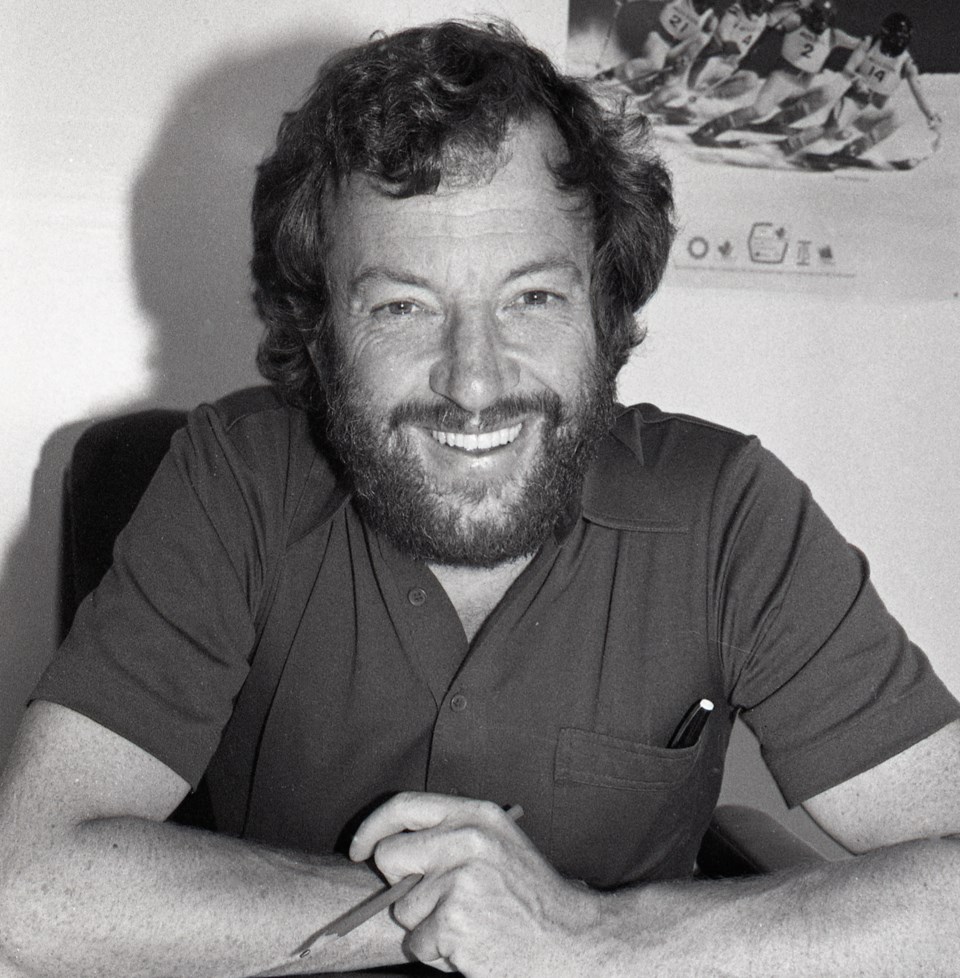In the Oct. 28, 1978 episode of the current affairs show, Webster!, award-winning journalist and host Jack Webster is talking with Al Raine and his wife, Olympic champion skier and eventual senator, Nancy Greene Raine, about the future of Whistler.
Throughout the interview, Webster peppers the Raines with questions about Whistler’s viability as a global ski destination. Who’s going to pay for the new lifts? Didn’t Whistler just have a horrible snow season?
Raine takes the questions in stride, always responding cooly, calmly, and with the confidence of a man who has a vision and believes in it wholeheartedly.
“Certainly, the major money, the major development at Whistler will be in the Village,” said Raine, two years before ground would be broken on the former site of the town dump. “It will be the hotels and the facilities that cater to the people who come to ski, who come to play golf and swim in the summertime.”
With the benefit of hindsight, Raine’s comments may seem self-evident. But, in 1978, just three years after the creation of the Resort Municipality of Whistler (RMOW), there’s no denying their prescience.
“Visionary is a word that gets used so often, but when it comes to Al, it fits,” said Whistler Mayor Jack Crompton, who counted Raine as a mentor until his final days. “Al’s clarity of vision for what Whistler would and could be was something special.”
Raine died Sunday, Dec. 15 after a battle with amyotrophic lateral sclerosis. He was 83.
A former president of the Whistler Resort Association, and alderman on Whistler’s original council, Raine was also Sun Peaks’ first and only mayor, announcing his resignation the day before his passing. Despite a long career in government, it was Raine’s love of skiing that would come to define—and, indeed, transform—his life.
The first in his family to take up the sport, Raine discovered skiing through the free lessons The Vancouver Sun offered to its paperboys. He quickly grew obsessed. In 1962, at the age of 21, Raine moved to Europe to hone his competitive skiing. When he returned to Canada three years later, he landed a job at Red Mountain in Rossland, before moving to Quebec to coach the Montreal Ski Hawks, a role that got him noticed at the national level. In 1968, Raine took over as head coach and program director for the Canadian Alpine Ski Team. During his five-year stint, Raine would help to modernize Canada’s ski programs and set the stage for the emergence of the so-called “Crazy Canucks,” a golden age for the national team.
“His personality, I would best describe him first as a coach,” said Greene Raine, who met her future husband while he headed the national program. “Everyone he worked with through his years, he coached and he led and he made their careers better.”
Raine’s impact on the ski industry would go far beyond the slopes. In 1974, a year after landing in Whistler with his wife and twin sons, the Raines’ proposal to develop Powder Mountain, west of Whistler, was rejected by the NDP, which was not interested in investing in the “elite” sport. Raine responded with a speech outlining the economic potential of tourism and, specifically, winter sports. A few weeks later, the province hired Raine to assess the potential for ski resorts in the Sea to Sky. Many of Raine’s ideas, including the notion of Blackcomb’s skiing potential and the suggestion that a Whistler town centre be pedestrian-oriented, made their way into the final provincial report.
In another sign of Raine’s clarity of vision, the province contracted him as B.C.’s provincial ski coordinator in 1975, a role that saw him complete 45 site evaluations and develop B.C.’s first commercial alpine ski policy.
“All of the growth in Canadian skiing has pretty much been in B.C., and all due to that alpine ski policy,” said Hugh Smythe, inaugural president of Blackcomb Mountain.
Raine coordinated the province’s proposal call to develop Blackcomb and was instrumental in securing Fortress as the new ski resort’s proponent.
Appointed to Whistler’s inaugural council in 1975, Raine’s vision and work ethic were on full display at a time when officials were tasked with creating an entire municipality out of whole cloth.
“We started out with absolutely nothing,” recalled John Hetherington, who served on that first council with Raine. “He was a pretty forceful guy and when he would state his opinion, you had to really consider it. It wasn’t something you could just let go.”
That strength of will was evident when the RMOW was tasked with landing on a design concept for Whistler Village. Raine, having spent ample time in the old pedestrian ski villages of the Swiss Alps, knew the original proposal, with its multi-storey hotels, didn’t work. In 1978, he travelled to Colorado, seeking input from Eldon Beck, an architect known for designing Vail. The pair’s vision aligned, and if Beck was the brains behind the Village, Raine was the thrust that made it happen.
“Whistler Village was not a walk in the park for any stretch of the imagination,” said Smythe. “If you had to pick one person, in my opinion it was Al who was responsible for what we now have and enjoy in Whistler Village. We owe him a huge debt of gratitude for his perseverance and determination on getting that through all the roadblocks, because there were many.”
A celebration of life is planned in Sun Peaks for Jan. 15.






